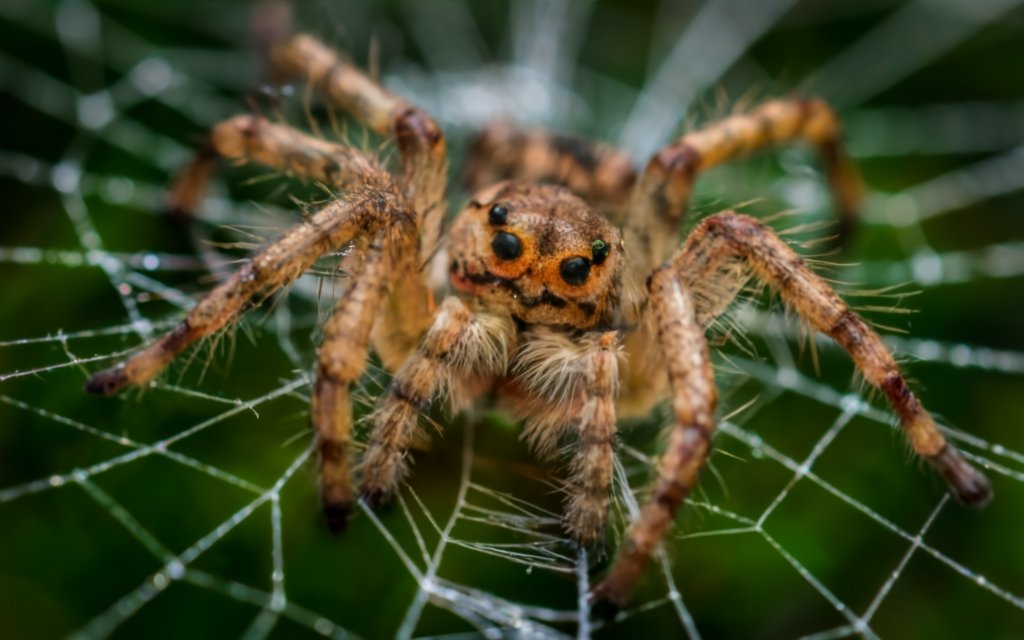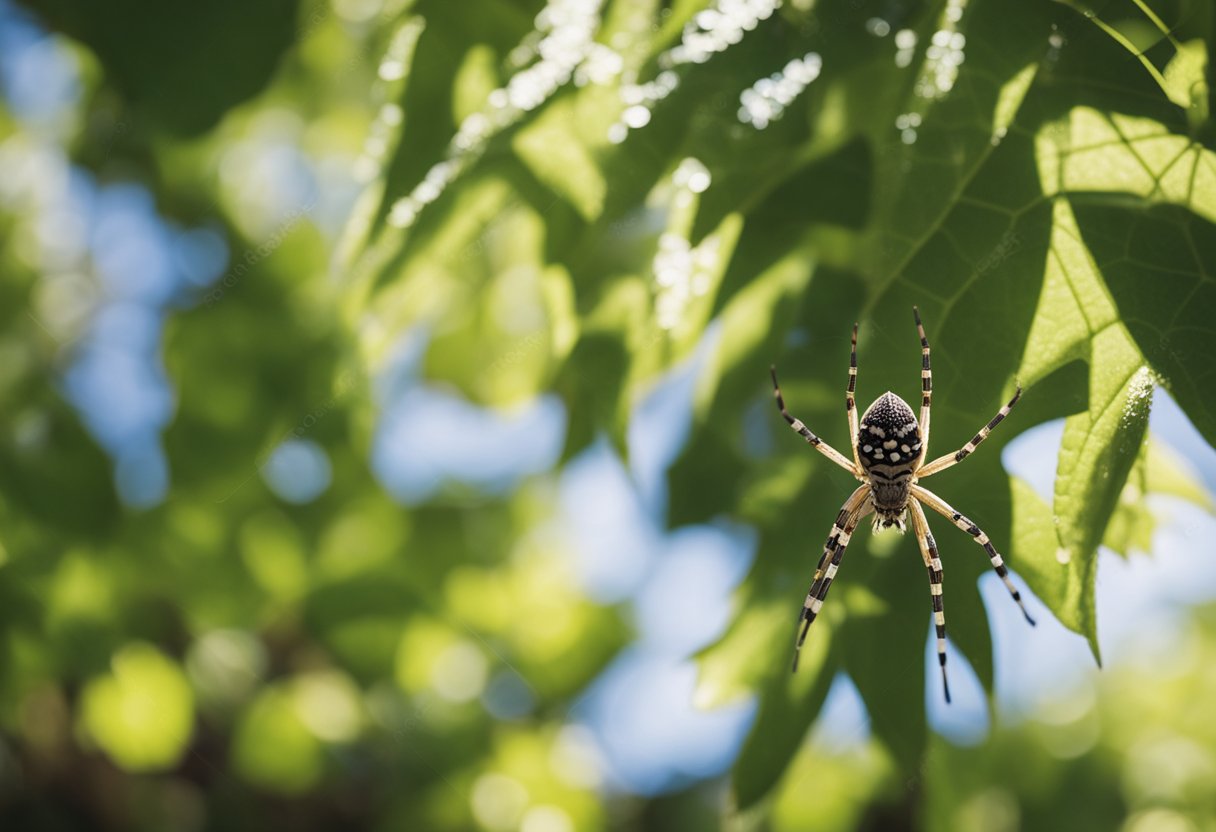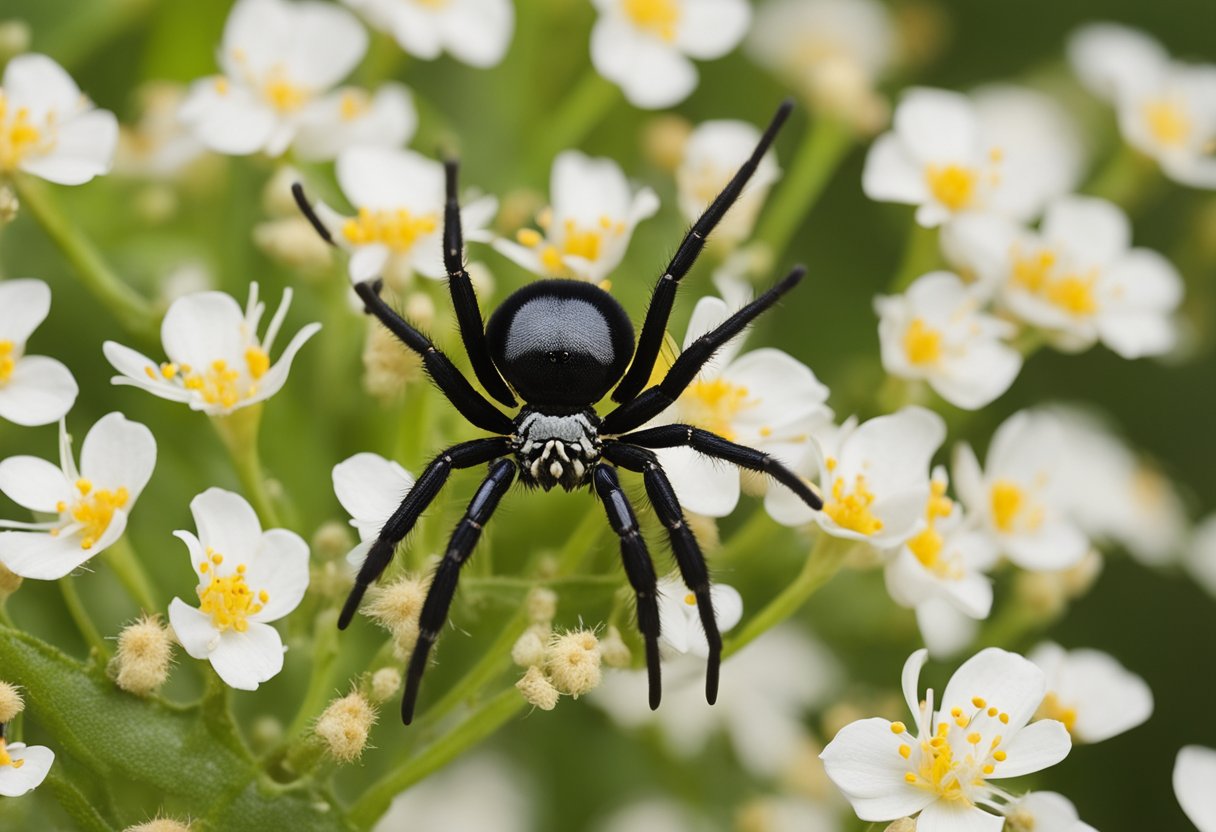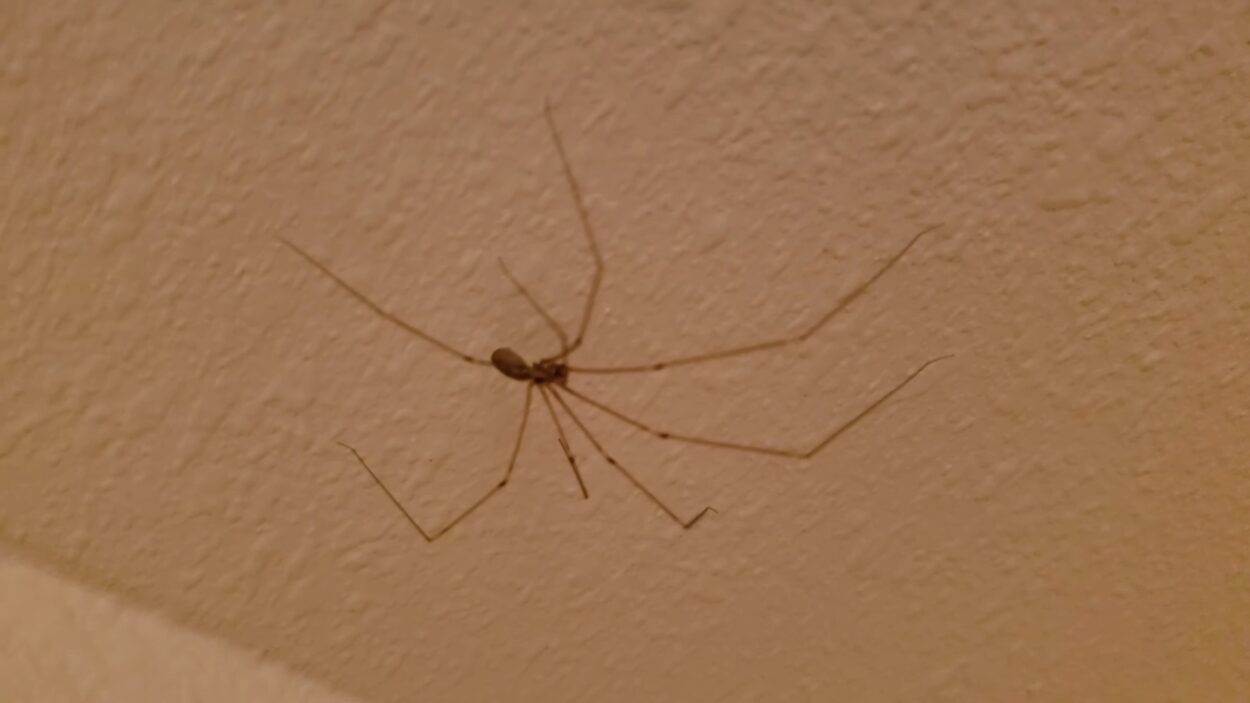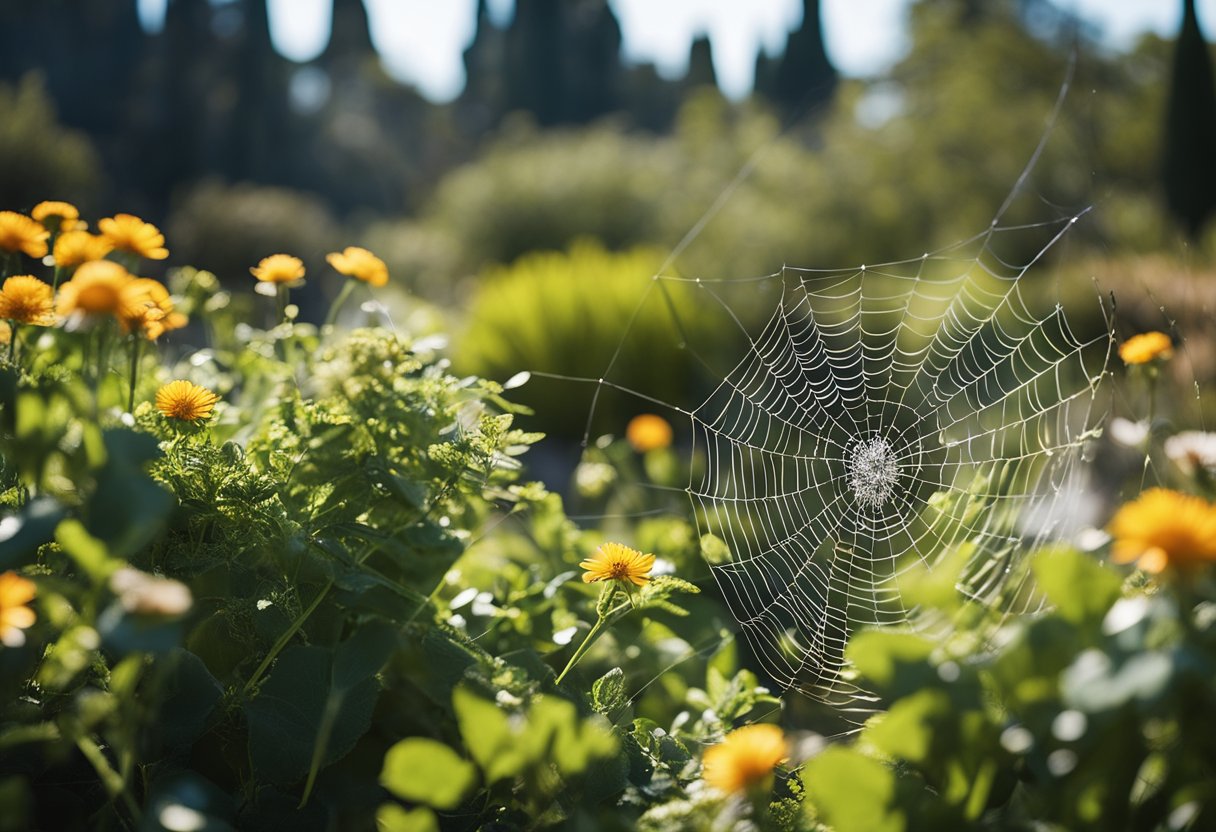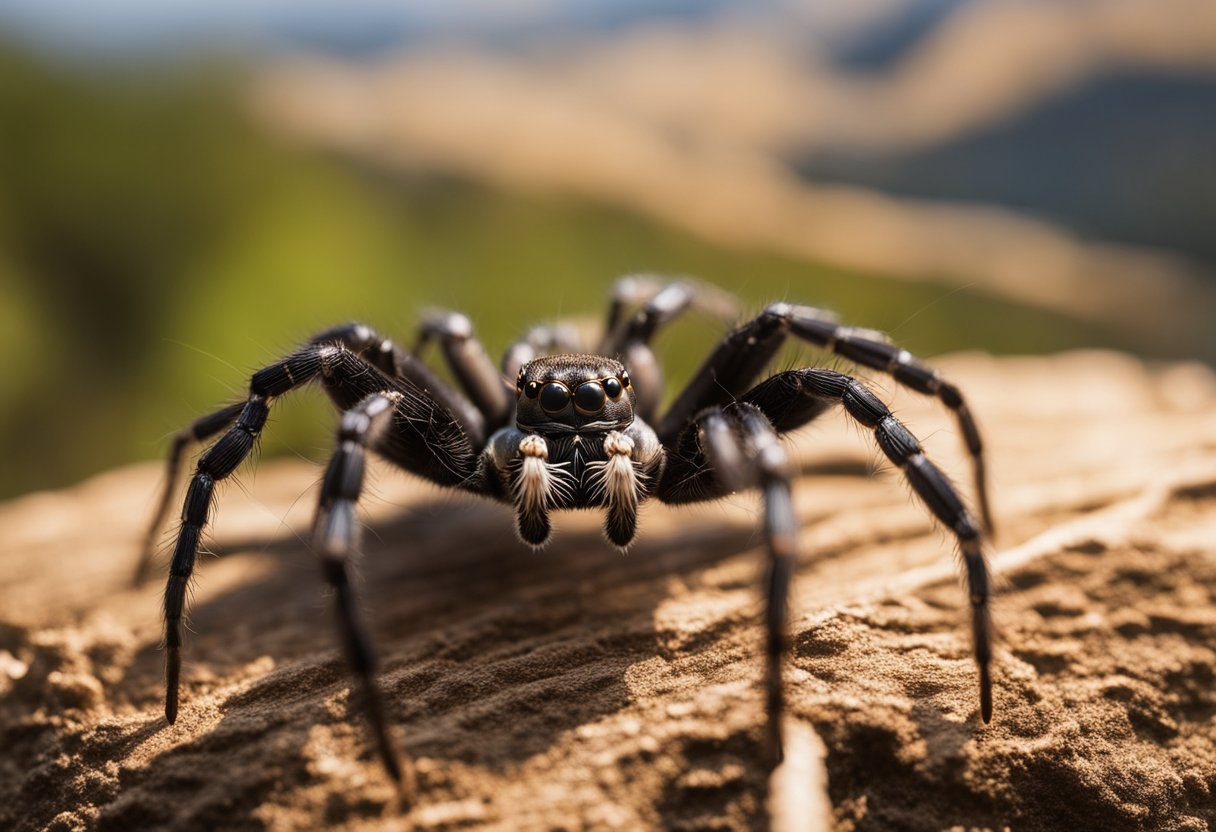California boasts a diverse range of habitats, from coastal regions to arid deserts, which are reflected in the variety of spiders found within its borders. Understanding these spiders is essential, not just for enthusiasts, but for residents looking to co-exist with these often misunderstood creatures.
While some species present clear identification marks, others are more subtle, and recognizing them can be crucial for safety and conservation efforts.
| No. | Common Name | Scientific Name | Description |
|---|---|---|---|
| 1 | Western Black Widow | Latrodectus hesperus | Black with a red hourglass shape on the underside of the abdomen. |
| 2 | Yellow Sac Spider | Cheiracanthium inclusum | Pale yellow or beige, often found indoors and in gardens. |
| 3 | Daddy Long Legs | Pholcus phalangioides | Known for their extremely long, thin legs and small body. |
| 4 | Garden Spider | Argiope aurantia | Large, with yellow and black markings on the abdomen. Builds large, circular webs. |
| 5 | Wolf Spider | Lycosidae family | Large, hairy spiders that hunt prey on the ground rather than using webs. |
| 6 | Brown Recluse | Loxosceles reclusa | Brown with a violin-shaped mark on their back. Notable for their venomous bite. |
| 7 | Tarantula | Family Theraphosidae | Large, hairy spiders, often kept as pets. |
| 8 | Orb Weaver Spider | Family Araneidae | Known for their wheel-shaped webs. Various colors and sizes. |
| 9 | Jumping Spider | Family Salticidae | Small, often colorful spiders known for their jumping ability. |
| 10 | Cellar Spider | Family Pholcidae | Long-legged, often found in dark, damp places like cellars. |
| 11 | Hobo Spider | Eratigena agrestis | Brown and slightly hairy, often mistaken for the brown recluse. |
| 12 | Funnel Web Spider | Family Agelenidae | Build funnel-shaped webs. Brown or gray in color. |
| 13 | Grass Spider | Agelenopsis spp. | Similar to the Funnel Web Spider, often found in grassy areas. |
| 14 | California Trapdoor Spider | Bothriocyrtum californicum | Dark brown or black, known for their burrows with trapdoor-like covers. |
| 15 | Crab Spider | Family Thomisidae | Named for their crab-like appearance and sideways movement. |
| 16 | Velvet Spider | Family Eresidae | Known for their velvety texture. Usually black or dark in color. |
| 17 | Lynx Spider | Family Oxyopidae | Green or yellow, often found in gardens. Active hunters. |
| 18 | Spitting Spider | Family Scytodidae | Can spit a venomous, sticky substance to capture prey. |
| 19 | Fishing Spider | Family Pisauridae | Large spiders that can “walk” on water. Found near water bodies. |
| 20 | Black House Spider | Badumna insignis | Dark brown to black, often found in man-made structures like window frames and under eaves. |
The fear of venomous spiders such as black widows is prevalent, yet knowledge about these spiders can dispel myths and reduce unwarranted panic. Identification guides and awareness about spider behaviors can assist Californians in identifying safe from potentially harmful species.
Furthermore, appreciating spiders’ ecological roles can foster a more informed perspective towards their conservation and the debunking of common misconceptions about these arachnids.
Key Takeaways
- California’s varied habitats are home to a diverse array of spider species.
- Proper identification and awareness of spider behavior can enhance safety and conservation.
- Understanding spiders helps dispel common myths and promotes coexistence.
Understanding Spiders in California
California is home to a diverse range of spider species, each adapted to thrive in the state’s varied environments. From coastal regions to arid deserts, these spiders exhibit unique characteristics and behaviors vital for survival in their respective habitats.
Diversity and Habitat
California’s environment supports a wide variety of spiders due to its diverse habitats ranging from beaches, forests, deserts, and urban areas. Researchers have documented over 60 unique spider species in the state.
Outdoors, one may encounter tarantulas and wolf spiders, while indoors, species like the black widow and brown widow are more common. For instance, the black widow spider is known for its preference for undisturbed, cluttered areas like woodpiles and storage sheds.
Physical Characteristics
The physical characteristics of spiders in California vary greatly. Spiders possess eight legs, but their leg span and body size can differ significantly between species. For example, the giant crab spider boasts one of the largest leg spans, capable of reaching impressive sizes.
Spiders’ eyesight also varies; some, like the jumping spider, rely on their excellent vision to hunt, while others depend on vibrations and touch. Adaptations such as these are vital for each spider species to capture prey and avoid predators within their California habitats.
Common Spider Species
California, renowned for its rich biodiversity, is home to a fascinating array of spider species, each with its unique adaptations to the state’s varied environments. Among these, the black widow is particularly notorious, known for its potent venom.
These spiders are often found in undisturbed, cluttered areas like garages or basements. My personal experience with these spiders underscores their preference for secluded spaces; I once discovered a black widow nestled in an old pair of boots in the garage, its distinctive red hourglass marking unmistakable.
Tarantulas, on the other hand, present a stark contrast with their imposing size. While their appearance can be startling, they are generally not as dangerous as one might think. Hiking in the hills of Southern California, I’ve encountered these gentle giants meandering across trails, especially during their mating season in the fall. Their presence is a reminder of the state’s diverse and thriving ecosystem.
In the urban and suburban landscapes of California, one is also likely to come across the common house spider. These spiders, often found in corners of rooms or windows, play a significant role in controlling insect populations. Observing them weave their intricate webs has been a subtle yet fascinating aspect of coexisting with these arachnids.
Additionally, garden spiders are a common sight, especially in areas with lush vegetation. With their vibrant colors and large, orb-shaped webs, they add a touch of natural artistry to gardens. I’ve often marveled at the geometric precision of their webs, glistening with dew in the early morning light.
Each of these spider species contributes to the rich tapestry of California’s ecosystem, playing crucial roles in ecological balance and pest control. Their presence, while sometimes unnerving, is a testament to the state’s environmental health and biodiversity.
Black Widow Spiders
Latrodectus hesperus, more commonly known as the black widow spider, has a fearsome reputation in California. These spiders can be identified by their glossy black bodies and the distinctive red hourglass shape on their abdomens. Black widows prefer undisturbed locations, and their venom is potent, necessitating caution when dealing with them.
I have one personal experience before 2 or 3 years:
I recall a summer evening when I was organizing the storage area in my garage. As I sifted through some old boxes and gardening tools, I spotted a small, glossy spider, tucked away in a dark corner. It was a black widow, identifiable by its shiny black body and the distinctive red hourglass shape on its underside.
Despite their fearsome reputation, black widow spiders are not typically aggressive. This one seemed more interested in avoiding me than anything else. Still, knowing the potency of their venom, I cautiously moved my belongings away from it, giving it plenty of space. I decided to leave the spider undisturbed, recognizing its role in controlling pests like flies and mosquitoes.
This encounter was a reminder of the importance of being mindful in areas where these spiders might reside. It also highlighted the need for regular cleaning and decluttering of storage spaces to avoid unwanted surprises. After that day, I made sure to wear gloves and pay closer attention when working in the garage, respectful of the wildlife that shares our spaces, even in urban settings.
Tarantulas
The desert tarantula, often simply referred to as the tarantula, is a species known for its size, with some specimens reaching over 4 inches in leg span. These hairy spiders are typically found in arid environments and are more likely to be seen in the fall, during their mating season.
Cellar Spiders
Often found in residences, cellar spiders, particularly the long-bodied cellar spider (Pholcus phalangioides), are ubiquitous in California. They are characterized by their long legs and tendency to reside in ceilings and corners where they create messy, irregular webs.
Jumping Spiders
Phidippus audax, or the bold jumping spider, is among the many species of jumping spiders spotted in California. These spiders do not create webs to catch prey; instead, they stalk and leap onto their quarry with remarkable precision.
Wolf Spiders
Belonging to the family Lycosidae, wolf spiders are robust, agile hunters often mistaken for tarantulas due to their size and hairy bodies. They reside on the ground and are nocturnal, pursuing their prey rather than spinning webs.
Identification and Features
In the diverse climate of California, spiders have adapted unique identification features, ranging from their coloration and markings to the complex patterns of their webs. These features are crucial for both spider identification and understanding their behavior in the ecosystem.
Coloration and Markings
Many spiders in California exhibit distinctive coloration that aids in their identification. The Brown Widow, for example, has a characteristic tan to gray coloration with a variable pattern that sets it apart from its more infamous black relative. Orb-weavers, a common group of spiders, often showcase vivid patterns with contrasting colors such as black and orange, which can serve as a warning to potential predators.
Web Patterns
Spider web patterns are not just for capturing prey; they also offer insight into the types of spiders that wove them. Orb-weavers construct iconic, intricate, and sticky orb-shaped webs that are easily distinguishable. On the other hand, spiders like the Calisoga spider do not create aerial webs; instead, they may dig a burrow to ensnare their prey.
Behavioral Traits
Spiders display a variety of behavioral traits that reflect their adaptations to the environment. While many rely on their webs for capturing prey, others have developed exceptional eyesight, using their vision to hunt.
Spiders’ interactions with their environment – how they catch their prey, avoid predators, and whether they are active nocturnally or during the day – are all vital behavioral traits that contribute to their identification.
Venomous Spiders and Safety
In California, residents encounter various spider species, but only a few are venomous and pose a threat to humans. It’s crucial to identify these medically significant spiders, understand the symptoms of their bites, and know the appropriate safety measures and first aid responses.
Medically Significant Species
- Black Widow Spider (Latrodectus spp.): Recognizable by the red hourglass on its abdomen, the black widow’s venom is a neurotoxin, posing risks to human health.
- Brown Recluse (Loxosceles reclusa): Rare in California, these spiders are identified by a violin-shaped mark on their back and can cause significant tissue damage.
- Yellow Sac Spider: Often found in homes, their bite can result in discomfort and minor skin reactions.
Bites and Symptoms
- Black Widow Bites: Symptoms may include severe muscle pain, abdominal cramps, and, on rare occasions, respiratory difficulties.
- Brown Recluse Bites: Initial bites are painless, but the site can develop into an open sore with necrosis, requiring medical attention.
- Yellow Sac Spider Bites: Characterized by erythema and mild to severe itching and pain.
Precautions and First Aid
- Precautionary Measures: Regularly inspect and clean corners and less trafficked areas of the home. Wear gloves when moving items in garages, sheds, or gardening.
- First Aid Steps:
- Calm and reassure the individual who’s been bitten.
- Clean the bite with soap and water.
- Apply a cold pack to reduce pain and swelling.
- Seek medical attention if symptoms escalate or if bitten by a black widow or brown recluse.
Spider Conservation
Spider conservation efforts in California emphasize the protection of spider habitats and the ecosystems they support. Spiders play a crucial role in regulating insect populations, serving as both predators and prey within their environment.
Habitat conservation is vital for spider species. They require diverse environments, which can range from the underbrush in forests to the crevices of urban structures. By preserving natural landscapes and mitigating habitat destruction, conservationists help maintain the ecological balance spiders contribute to.
Efforts include:
- Educating the public on the value of spiders to ecosystems and agriculture as pest controllers.
- Protecting habitats against pollution and deforestation which can disrupt the intricate web of life spiders are part of.
- Restoration projects to rebuild environments where spiders can thrive.
Spiders face threats from pesticides, habitat loss, and climate change. With their delicate life cycles, even small changes can have significant impacts. Conservation programs strive to limit the use of harmful chemicals which not only endanger spiders but also the intricate food webs they inhabit.
Predator-prey dynamics are also essential. Spiders serve as food for birds, lizards, and other small mammals. Their preservation is intertwined with the protection of these species as well.
Conservation initiatives support research understanding spider behavior and habitat needs. They also push for policies that protect these often misunderstood creatures, ensuring their survival and the biodiversity of the regions they inhabit.
Myth Busting Common Misconceptions
Addressing common misconceptions about spiders can help reduce unwarranted fear and encourage a better understanding of these often misunderstood creatures.
False Widow Spiders
Despite the alarming name, false widow spiders, which include species such as the Steatoda, are often mistaken for their more dangerous relatives. The noble false widow and the false black widow have garnered a fearsome reputation, but in reality, their bite is rarely significant to human health. Research dispels the myth, making it clear that while their presence is noteworthy, there’s no need for panic.
Cellar and Daddy Long Legs Myths
Misconceptions about cellar spiders and daddy long legs abound, with many believing them to have deadly venom. However, this is untrue. Cellar spiders, also often confused with daddy long legs, are harmless to humans, and their venom is not potent against us. The daddy long legs, which isn’t a spider but a different arachnid, has no venom at all, thus posing no threat to humans.
Studies about spiders in California
There are several interesting studies and resources related to spiders in California. The Department of Entomology at the University of California, Riverside, offers a comprehensive overview of spider research, including details on recluse spiders, brown widows, and other species found in the region.
The Essig Museum of Entomology provides information on common synanthropic spiders in California. Some notable species include the cellar spider, black widow, and various types of orbweavers and house spiders. These studies highlight the diversity of spiders in California, including native species and those introduced from other regions.
Additionally, the University of California, Berkeley, has conducted significant biodiversity studies on spiders. They have developed an interactive database, CalBug, which integrates entomological collections from several institutions in California. This database is part of a larger effort to examine the impacts of climate change and habitat modification on arthropod populations, including spiders. Their research covers a broad range of topics from ecological community-level approaches to examining how spider communities assemble and evolve over time.
Frequently Asked Questions
This section addresses common inquiries about the diverse and intricate world of spiders in California, providing clarity on species identification, risk assessment, and habitat preferences.
What types of spiders are commonly found in California homes?
Commonly encountered spiders in California homes include the domestic house spider and the cellar spiders. These species are often found in corners, basements, and garages.
How can one identify different spider species in California?
Identification of California spider species can be accomplished through observation of their size, color, web structure, and habitat. Field guides and online databases offer photographic comparisons and detailed descriptions.
Which spiders in California are considered poisonous or dangerous?
The black widow spider is considered dangerous due to its potent venom. The brown recluse is another spider with a venomous bite, but it is not commonly found in California.
What are the characteristics of common garden spiders in California?
The yellow garden spider is one of the common garden spiders in California, recognizable by its striking black and yellow coloring and the distinctive zigzag patterns in its webs.
Are there any common white or grey spiders in California households?
California households may sometimes host common synanthropic spiders that are typically grey or white. These spiders are often found in less disturbed areas of the home.
What is the typical habitat for jumping spiders in Southern California?
Jumping spiders in Southern California favor a variety of habitats, including natural foliage, outdoor structures, and sometimes indoors. They are active hunters and do not rely on webs to catch their prey.

